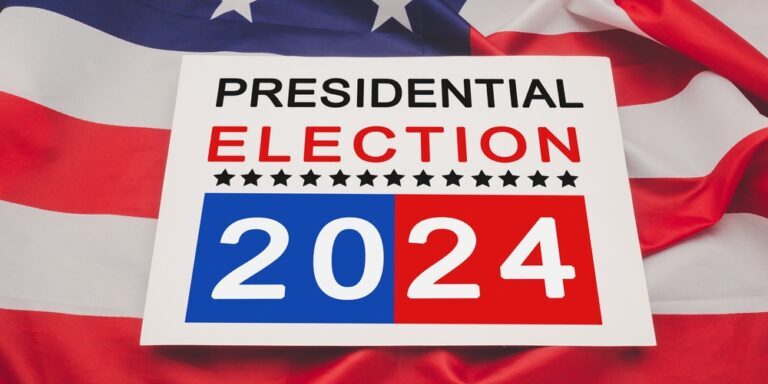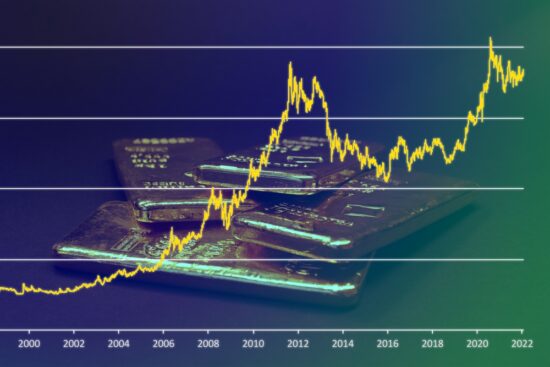
Rigging Reality: Why Polls Could Be Misleading You This Election Season
As my longtime readers know, I’m a financial forecaster who prefers to focus on markets.
But because politics can have such a large influence on markets, I can’t afford to ignore politics. So I’ll be focusing a lot on the November election in the next two months.
Today we’ll be looking at the candidates’ platforms, along with polling results and methodologies.
We’ll also consider some wild cards that most financial media are not anticipating and most investors are not aware of.
The implications for investors could not be more clear. So let’s dig in.
You’ll be bombarded with polling data almost daily from now until Election Day. It’s critical to understand how polls can be rigged by skewing the poll participants and other statistical techniques and which polls you can trust.
Trump supports lower taxes, less regulation, higher tariffs on imported goods, a secure border, deportation of illegal immigrants (starting with criminals and terrorists) and a strong military but little or no involvement in foreign conflicts. And he wants to “drill, baby, drill.”
Harris wants higher taxes on corporations, higher taxes on capital gains, price controls, open borders, defunding the police, ending private health insurance, continued aid to Ukraine to keep that war going and expansion of the Green New Scam.
You don’t need to be an economist or political scientist to see that the Trump and Harris policies are complete opposites, and they will have radically different impacts on individual stocks, bonds and portfolio allocations.
(As you know, the big Kamala-Trump debate takes place tomorrow night. I’ll be appearing on the Paradigm Press YouTube Channel for my post-debate breakdown that’ll go beyond the headlines. Prepare yourself for the unexpected. Tune in on Wednesday, Sept. 11 so you don’t miss a minute of the action.
Click here to subscribe, so you’ll be the first to catch this urgent video.)
A good place to begin is with a survey of the latest polls. These polls offer a snapshot of where voter sentiment stands right now; they’re not necessarily good forecasting tools unless they’re highly rigorous in their statistical methodology and done fairly close to the election.
It’s clear to me that recent polls of the presidential race have been rigged in favor of Kamala Harris in a way designed to maintain a narrative that she’s a young, energetic new kid on the block instead of just another tired old politician with little to offer.
A recent example was The Hill, which ran a headline Harris Leading Trump by 7 Points: Poll. Wow. RealClearPolitics had Harris ahead by 1.7 points on the same day. How does that happen?
You have to consider the polling methodology to see what’s going on. The Hill headline was based on a poll conducted by Fairleigh Dickinson University. The poll was conducted among “registered voters” using only 801 respondents and the sampling error was plus or minus 3.5 percentage points.
That poll is garbage. Here’s why. To conduct a statistically valid poll you need at least 1,300 respondents. That’ll give you a decent result. Anything less has a large margin of error and is of little value.
The sample of “registered voters” is also garbage because almost half of registered voters don’t actually vote. The only polls worth considering are conducted among “likely voters” based on some measure of likelihood such as whether they actually voted in any of several recent elections.
Beyond that, there are statistical games that are hidden from view such as the skew in poll respondents. Assume voter registration in a certain jurisdiction is 27% Democrat, 27% Republican and 46% independent. What some pollsters do is to create a sample of, say, 35% Democrats, 25% Republicans and 40% independents instead of using the actual distribution.
When you oversample Democrats, the result naturally overstates support for the Democratic candidate. That’s huge in a tight race. Even if you narrow down your sample to likely voters, you still have to adjust for what are called “low propensity” and “high propensity” voters.
The high-propensity voters are those most engaged in politics who watch practically every headline and twist and turn in the race. Low-propensity voters are those who pay little or no attention and may or may not turn out on Election Day even if they fall in the “likely” category.
The difference matters in a high-turnout election where even those not particularly focused on politics feel there is a lot at stake and they should make the effort to vote. The 2024 election is definitely one of those crucial elections where low-propensity voters turn out and those voters tend to be more supportive of Trump (blue collar, no college, most hurt by inflation, etc.).
The polls are not well-calibrated to identify and reach out to low-propensity voters and therefore systematically underestimate Trump’s actual support. Kamala Harris supporters are making a huge mistake if they believe these media polls.
It’s also good news for Trump supporters. You have to look beyond the fake news to see what’s going on. Right now, it looks like Trump is maintaining a lead in what is admittedly a tight race.
But below, I show you why it’s foolish to rule a Kamala victory out. I also show you the wild cards that can drastically influence the election of Nov. 5. Read on.
Don’t Count Kamala Out
By Jim Rickards
Kamala Harris isn’t that bright and has very little experience in management, domestic policy or foreign policy despite having been vice president for the past 3½ years. She’s best described as an empty head in an empty pantsuit. That said, she has a real chance of winning the presidency on Nov. 5.
That’s because the Democratic Party establishment, pollsters, the corporate media, Big Tech and big money have united in an “all hands” effort to paint Donald Trump as an existential threat to everything — democracy, liberty, racial equality, diversity, you name it — liberal democracy holds dear.
This framing of the election has led to the emergence of basement strategy 2.0. We all recall Biden’s non-campaign in 2020 when he spent months in his basement (supposedly because of COVID fears) and relied on scripted speeches, teleprompters and surrogates to get his message out. The message wasn’t much different than today’s Democrat message — Trump is a threat to democracy so vote for me.
Today, Kamala’s putting on a credible version of the basement strategy. This includes no press conferences, almost no interviews, not much of a policy platform and no public statements except for scripted platitudes read off a teleprompter.
Kamala did grant one interview in late August, but it was on a friendly venue (CNN) with a friendly reporter, Dana Bash (last seen coaching Joe Biden with hand signals on the June 27 debate to keep Joe from staring off into space), and with notes handy and VP nominee Tim Walz by her side to do much of the talking.
Don’t assume this strategy won’t work. The Democrat plan is simply to keep Kamala spouting teleprompter platitudes and run out the clock. The election will effectively be over by Oct. 15 because of early voting. That’s just five weeks away.
If Harris can avoid the press (with help from the press itself), avoid policy specifics and just keep bashing Trump, she might emerge the winner. The campaign is really a race between what we call the Kamala Narrative and the Kamala Reality. Can they do it? Possibly yes.
The election boils down to whether the Trump campaign can make the reality clear and pop the narrative bubble in the next five weeks. Trump should stick to his issues (immigration, inflation, energy production, lower taxes and less regulation).
(Again, the big Kamala-Trump debate takes place tomorrow night. I’ll be appearing on the Paradigm Press YouTube Channel for my post-debate breakdown that’ll go beyond the headlines. Prepare yourself for the unexpected. Tune in on Wednesday, Sept. 11 so you don’t miss a minute of the action.
Click here to subscribe, so you’ll be the first to catch this urgent video.)
Still, how does he do that in the face of a media blackout and Democrat lies about their real positions (such as Kamala’s claims she will stop inflation and control the border, etc.)? How does Trump pop the Harris narrative without name-calling and anger?
The best approach for Trump may be ridicule. It’s extremely powerful and works better than name-calling. Making Harris out to be a ridiculous figure with no policy success, no substance and not very bright may be the most effective technique for popping the narrative bubble.
Now it’s time to consider the events that could throw the election into turmoil that are mostly ignored or assumed away as too unlikely.
If there’s one thing we’ve learned over the past few months, it’s that the unlikely is highly likely. A president in cognitive failure, an assassination attempt on a candidate and a substitute nominee who never ran in the primary or got a single vote were all considered unlikely, yet they all happened in quick order.
Let’s look at the supposedly unlikely events, which may in fact be highly likely to occur. First there’s the war in Ukraine. It’s coming to a decisive defeat for the Ukrainians far faster than Americans realize thanks to corporate media who support the war.
The Kursk invasion by Ukraine is a sideshow but one that will end with the annihilation of the Ukrainians in October when fresh Russian reserves arrive. Along the main battlefronts in Donbas, Russia is seizing town after town and occupying key supply and logistics hubs.
Russian missiles are raining down on cities all over Ukraine. The Ukrainian power system is in ruins and Ukrainian air defenses are gone except around Kyiv and whatever was diverted to Kursk.
Look for major Russian victories and the possible overthrow of Zelenskyy before Election Day. This would be a new disaster for the Biden-Harris foreign policy team and give Trump an election boost.
The war in Gaza could also expand into a five-front war of Israel against Hamas (in the south), Hezbollah (in the north), Palestinians on the West Bank, the Houthis (in the east) and Iran (with missiles coming from over the horizon). The U.S. would be unable to keep out of this wider war and would have to supply weapons and ammunition to Israel.
Oil prices could soar temporarily despite a coming recession and deflationary trends in general. Russia would help Iran, which would put nuclear-armed Russia and Israel in a head-to-head confrontation.
This would be another foreign policy failure for Biden-Harris and another positive for the Trump campaign. U.S. support for Israel would cause the Arab-American vote in Detroit and Dearborn to stay home, putting Michigan within reach for Trump.
The Secret Service may not have pulled the trigger in the Trump assassination attempt, but they certainly let it happen with gross negligence and indifference to warnings. We cannot rule out another assassination attempt on Trump or on J.D. Vance or RFK Jr. Let’s pray it doesn’t happen but let’s not pretend it cannot.
A market crash or banking crisis (or both) is also a real possibility. The U.S. economy is slowing rapidly and may already be in a recession. The stock market is in a huge bubble with one of the highest degrees of concentration risk in history. Banks are reducing lending, facing losses in commercial real estate and pressed on liquidity.
A major market setback between now and mid-October would be hugely negative for Harris since the Biden-Harris administration is currently in office and cannot duck responsibility.
Finally, most of the votes will be cast before Election Day but most won’t be counted until official poll closing times that day. There can be no assurance that the votes can actually be counted that day or that disputes, fraud claims and lawsuits won’t continue for weeks or longer.
Given the extent of Democrat cheating and the Republicans’ efforts to gear up with poll watchers and lawyers, some contests seem inevitable. The “election season,” which begins now, may not be over on Election Day.
Be prepared for electoral chaos lasting possibly through December. I recommend allocating a significant part of your portfolio to gold, cash, land and other hard assets.
This article originally appeared on Daily Reckoning.
The financial market is crumbling and EVERYONE will be affected. Only those who know what's going on and PREPARE will survive... dare we say thrive. Our 7 Simple Action Items to Protect Your Bank Account will give you the tools you need to make informed decisions to protect yourself and the ones you love.











